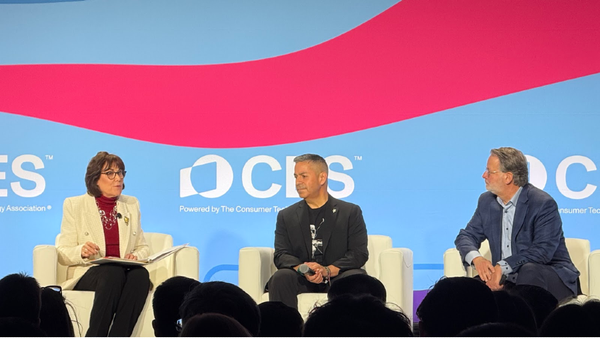Steven Schwerbel: BEAD Will Succeed If WISPs Can Participate
While an excellent tool for many applications, fiber is far from the only, or even optimal, solution for every broadband access challenge.
Steve Schwerbel

Decades of regulatory liberalization gave birth to the Internet and enabled, among other things, wireless internet service providers (WISPs) to flourish. As the high regulatory hurdles of bureaucracy were lowered and removed, WISPs found clear paths to run, taking them quickly to areas neglected by old monopolies, which had always deemed rural, underserved, and Tribal regions too costly and unprofitable to serve.
Rapidly evolving fixed wireless technologies have been central to this growth, offering WISPs cutting-edge flexibility to use the right tool for the job. This environment of “regulatory bypass” has brought millions of previously unconnected Americans online, helping to close the digital divide.
Broadband kept many Americans connected through the pandemic. It was a lifeline, but not everyone had access to the Internet during those trying times. With the scale of the problem glaringly obvious, Congress passed the Infrastructure Investment and Jobs Act to fill in broadband gaps, with the goal of making sure all Americans could stay connected and productive in future emergencies.
States as the driving force for broadband expansion
Through the IIJA and the NTIA’s Notice of Funding Opportunity for the Broadband Equity Access and Deployment program (which implements the IIJA), states were seen as the driving force for rolling-out this historic broadband expansion program: They knew local conditions and needs and would be able to address granular local realities that a federal agency might not see.
That boots-on-the-ground approach has led NTIA to shift its guidance in ways that reflect the needs of smaller providers and other stakeholder input.
We first saw this responsiveness in the NTIA’s willingness to revamp the BEAD NOFO’s requirement that ISPs seeking BEAD funds must maintain a Letter of Credit as financial surety that projects will be successfully completed. While the impulse was correct, Letters of Credit often fenced out smaller, local providers who could not access this type of financial instrument.
WISPA members and a coalition of grassroots broadband policy organizations worked to broaden the kinds of financial instruments that could be used, a move which incrementally shifted the rules of the program to more closely align with its ultimate intent: making the program attractive to the widest possible universe of ISPs to reach into every pocket of unserved or underserved locations in the country.
The original fiber-first approach in the NOFO was similar – while an excellent tool for many applications, fiber is far from the only, or even optimal, solution for every broadband access challenge. Through extensive consultation with states, as well as with policy input from associations like WISPA, it was increasingly clear that an overreliance on fiber and its high cost would limit the more fundamental mission of ensuring “broadband for all.”
This led the NTIA, on August 26, 2024, to solicit input on a draft guidance document that would increase the program’s openness to non-fiber alternatives – solutions which not only can meet the IIJA’s technical standards, but are also more economical and quicker to deploy, closing the digital divide in some of America’s most challenging-to-serve corners.
Fixed wireless networks built at a fraction of the cost of fiber
A fixed wireless network can be built at a fraction of the cost of fiber—about one-tenth—and deployed in months instead of years. This means faster connections for more people compared to wired options. For a generation, WISPs have delivered reliable connectivity to rural, underserved, and Tribal areas, effectively delivering broadband where it was not.
Agile and innovative, they use a mix of fiber, licensed, and unlicensed wireless so communities can stay connected and competitive. The “WISP model” works, and the millions of Americans who have WISPs as their broadband providers love and rely on them.
NTIA has made some improvements to BEAD since its release and is contemplating still others. WISPA applauds that movement and encourages NTIA to continue to use the goal of “Internet for All” to arrive at a final policy set that maximally empowers states and allows local solutions to rise to the top. Key to this would be:
- Giving states the discretion to set extremely high cost per location thresholds that address each state’s particular needs, allowing them to further open the doors to a wider constellation of applications to identify which technology offers the most appropriate solution to each unique project area.
- Providing clear guidelines to prevent overbuilding of broadband which otherwise meets IIJA’s baseline technical standards.
- Continuing to seek to reduce administrative barriers that exclude smaller ISPs.
These changes will invite more players like WISPs into the process, ensuring BEAD succeeds for unserved and underserved communities across America.
Steven Schwerbel currently serves as State Advocacy Manager for WISPA. In this capacity, he helps engage our volunteer coordinators in advocacy opportunities with state broadband offices, legislators, and policymakers who are shaping state-level broadband decisions. This Expert Opinion is exclusive to Broadband Breakfast.
Broadband Breakfast accepts commentary from informed observers of the broadband scene. Please send piecesto commentary@breakfast.media. The views expressed in Expert Opinion pieces do not necessarily reflect the views of Broadband Breakfast and Breakfast Media LLC.










Member discussion